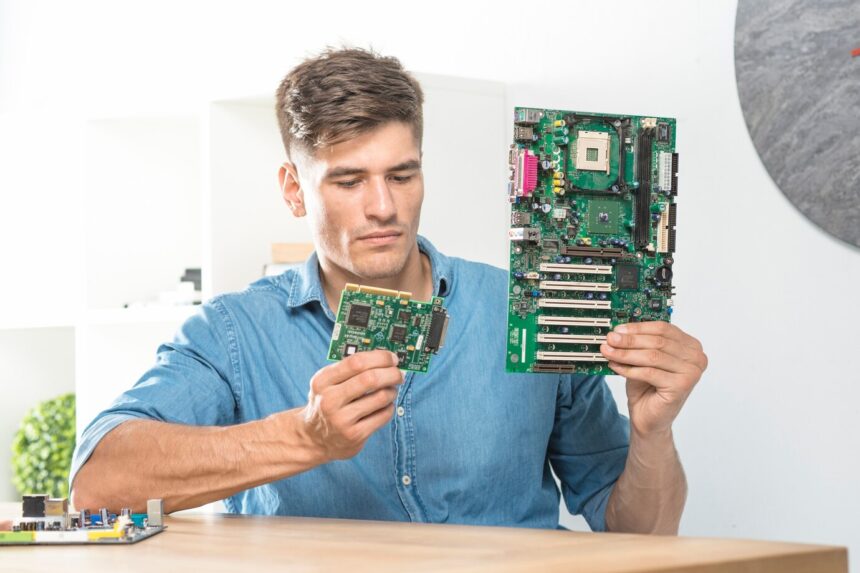Closed-circuit television (CCTV) systems have become an essential component of security infrastructure for both residential and commercial properties. With advancements in technology, CCTV systems have evolved to provide high-definition video monitoring and remote access capabilities, making them more effective in deterring crime and enhancing surveillance capabilities. In this comprehensive guide, we will explore the key considerations and steps involved in the closed circuit tv installation.
Understanding Closed Circuit TV Systems
A CCTV system consists of cameras, monitors, and recording devices that work together to capture and store video footage for surveillance purposes. Unlike broadcast television, which transmits signals to the public, CCTV systems use closed circuits to transmit signals to specific monitors or recording devices. This closed system ensures that the video feed is private and secure, making it ideal for surveillance applications.
Modern CCTV systems offer a wide range of features, including high-definition video quality, motion detection, infrared night vision, remote access via mobile devices, and cloud storage options. These features enhance the effectiveness of CCTV systems in monitoring and securing properties.
Planning Your CCTV Installation
Before diving into the installation process, it is crucial to plan your CCTV system effectively. Start by conducting a thorough assessment of your property to identify key areas that require surveillance coverage. Consider factors such as entry points, blind spots, high-value assets, and vulnerable areas when determining the placement of cameras.
Additionally, think about the type of cameras that best suit your surveillance needs. Dome cameras are ideal for indoor use and provide a discreet surveillance solution, while bullet cameras are more suitable for outdoor applications due to their weatherproof design and long-range capabilities. PTZ (pan-tilt-zoom) cameras offer flexibility in adjusting the viewing angle and zoom level remotely, making them suitable for monitoring large areas.
Choosing the Right CCTV Equipment
When selecting CCTV equipment for your installation, consider factors such as camera resolution, lens type, infrared capabilities, and connectivity options. Opt for high-resolution cameras with at least 1080p for clear and detailed video footage. Varifocal lenses allow you to adjust the focal length for a customized viewing angle, while cameras with infrared LEDs provide visibility in low-light conditions.
For recording and storing video footage, choose a digital video recorder (DVR) or network video recorder (NVR) that meets your storage requirements. NVRs offer the advantage of remote access and cloud storage options, allowing you to view live or recorded footage from anywhere using a mobile device or computer.
Installation Process
Once you have planned and selected the right CCTV equipment for your installation, it’s time to proceed with the installation process. Follow these steps for a successful CCTV installation:
- Mounting Cameras: Install cameras at strategic locations based on your surveillance plan. Ensure that cameras are positioned securely and provide optimal coverage of the area.
- Running Cables: Run cables from the cameras to the recording device or monitor. Use cable clips and conduits to secure and protect the cables from damage.
- Connecting Equipment: Connect the cameras to the recording device or NVR using the appropriate cables. Ensure that all connections are secure and properly configured.
- Configuring Settings: Set up the CCTV system by configuring camera settings, recording preferences, motion detection, and remote access options. Follow the manufacturer’s instructions for initial setup and customization.
- Testing System: Test the CCTV system to ensure that all cameras are capturing clear video footage, recordings are functioning correctly, and remote access features are working as intended. Make any necessary adjustments to optimize performance.
Maintenance and Monitoring
To ensure the longevity and effectiveness of your CCTV system, regular maintenance and monitoring are essential. Perform routine checks on cameras, cables, and recording devices to detect any issues early on. Clean camera lenses and housings periodically to maintain clear video quality.
Additionally, monitor the CCTV system regularly to review video footage, check for any suspicious activities, and ensure that the system is operating smoothly. Consider integrating your CCTV system with alarm systems or monitoring services for enhanced security and rapid response to security incidents.
Conclusion
In conclusion, the installation of a closed-circuit television (CCTV) system is a crucial step in enhancing the security and surveillance capabilities of residential and commercial properties. By understanding the key considerations, planning effectively, choosing the right equipment, and following the installation process, you can create a robust CCTV system tailored to your specific security needs.
Remember that proper maintenance and monitoring are essential to keeping your CCTV system in optimal condition and ensuring continuous surveillance coverage. With the advancements in technology and the wide range of features available in modern CCTV systems, you can achieve a high level of security and peace of mind for your property.





